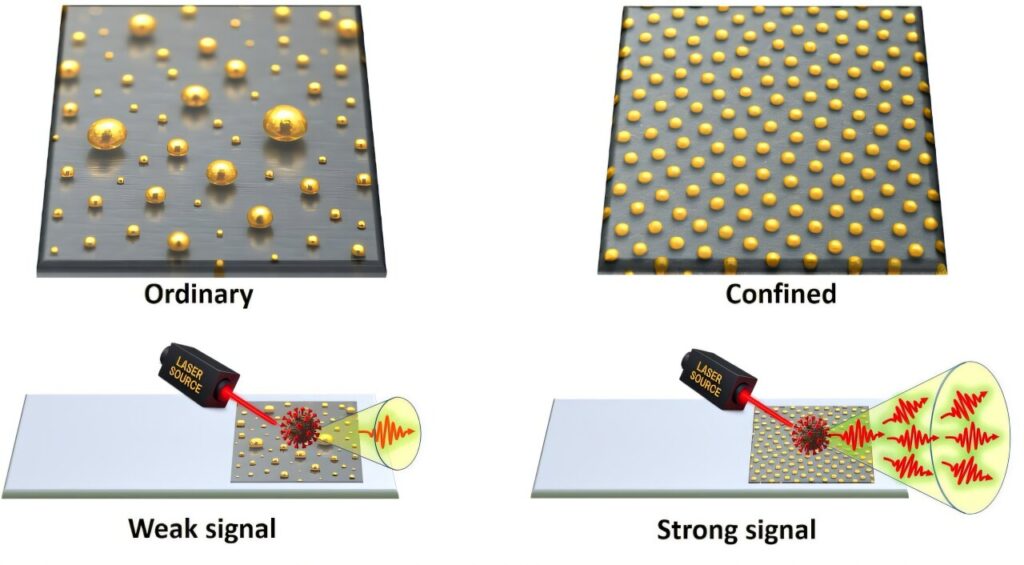Breakthrough in Nanotech: IISER Pune and IIT Bombay Develop Cost-Effective, Scalable Technique to Produce Precision Metal Nanoparticles

Breakthrough in Nanotech: IISER Pune and IIT Bombay Develop Cost-Effective, Scalable Technique to Produce Precision Metal Nanoparticles
Pune/Mumbai: In a major advancement for nanotechnology, scientists from the Indian Institute of Science Education and Research (IISER) Pune and the Indian Institute of Technology (IIT) Bombay have introduced an innovative, low-cost technique to produce highly uniform and stable metal nanoparticles. These nanoparticles play a critical role in cutting-edge applications such as biosensors, environmental monitoring, and diagnostic devices.
The technique, known as “confined dewetting,” offers a scalable, energy-efficient, and affordable way to create nanoparticles with high precision. The method was detailed in a recent study published in the journal Small Methods.
Unlike traditional fabrication methods that require expensive infrastructure and complex procedures, confined dewetting relies on a simpler physical process. The researchers deposited ultra-thin metal films—about 10,000 times thinner than a human hair—onto surfaces, then sandwiched them between a solid base and a soft, elastic layer made of PDMS (a silicone-based material). When heated, the metal film spontaneously breaks into uniform, tightly packed nanoparticles due to surface energy dynamics.
“This technique simplifies the process and ensures excellent particle stability and uniformity,” said Dr. Ayesha Rahman, lead author and research scientist at the I-Hub Quantum Technology Foundation hosted at IISER Pune. “It works across a variety of metals—like gold, silver, copper—and on multiple surfaces including flat glass, textured materials, and even curved optical fibres.”
Dr. Atikur Rahman from IISER Pune, one of the lead researchers, explained the underlying physics: “PDMS’s elasticity and low surface tension play a key role in forming smaller, consistent particles. It also prevents oxidation, making the nanoparticles more durable and reliable.”
The team’s experiments demonstrated that sensors developed using this method could detect molecules at picomolar concentrations—equivalent to one trillionth of a mole per litre. Such extreme sensitivity could significantly advance early-stage disease detection, including cancer diagnostics, as well as trace detection of harmful substances like lead or mercury in water.
Prof. Anirban Sain from IIT Bombay, who co-led the research, emphasized the broader implications: “This is a confluence of fundamental physics and real-world application. Confined dewetting could serve as a foundation for new generations of nano-enabled technologies that are not only powerful but also accessible.”
This research was supported by the National Mission on Interdisciplinary Cyber-Physical Systems under the Department of Science and Technology (DST), Government of India, through the I-Hub Quantum Technology Foundation at IISER Pune, along with additional support from DST-SERB.
The discovery marks a significant milestone in the journey of making nanotechnology more practical and affordable. With potential applications spanning health diagnostics, pollution monitoring, and quality control in manufacturing, the method holds promise to revolutionize how nanoscale devices are designed and deployed.
As the world continues to look toward technology that is not only efficient but also scalable and affordable, innovations like confined dewetting demonstrate how cutting-edge science can meet real-world needs—one nanoparticle at a time.












